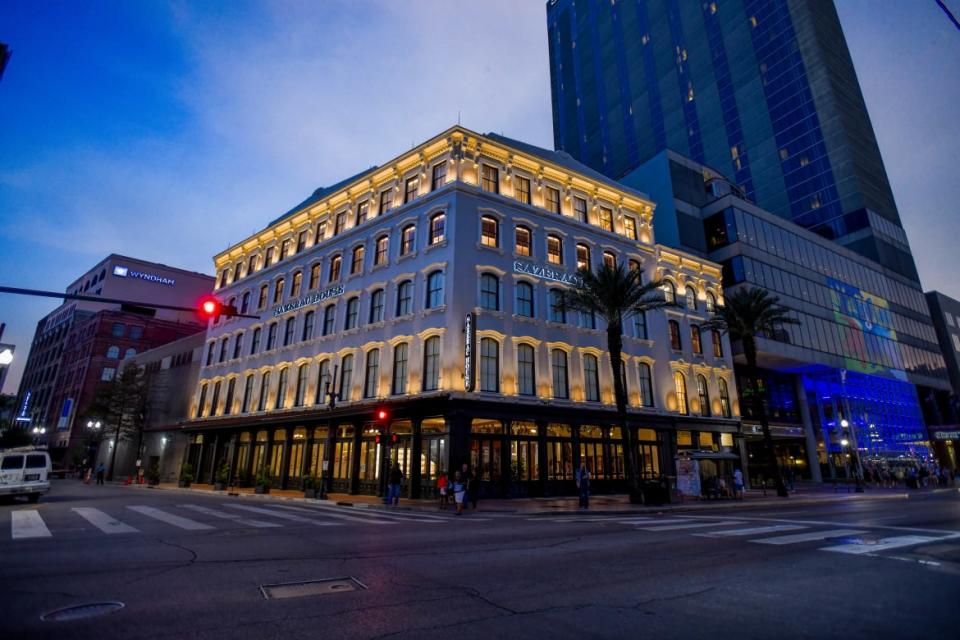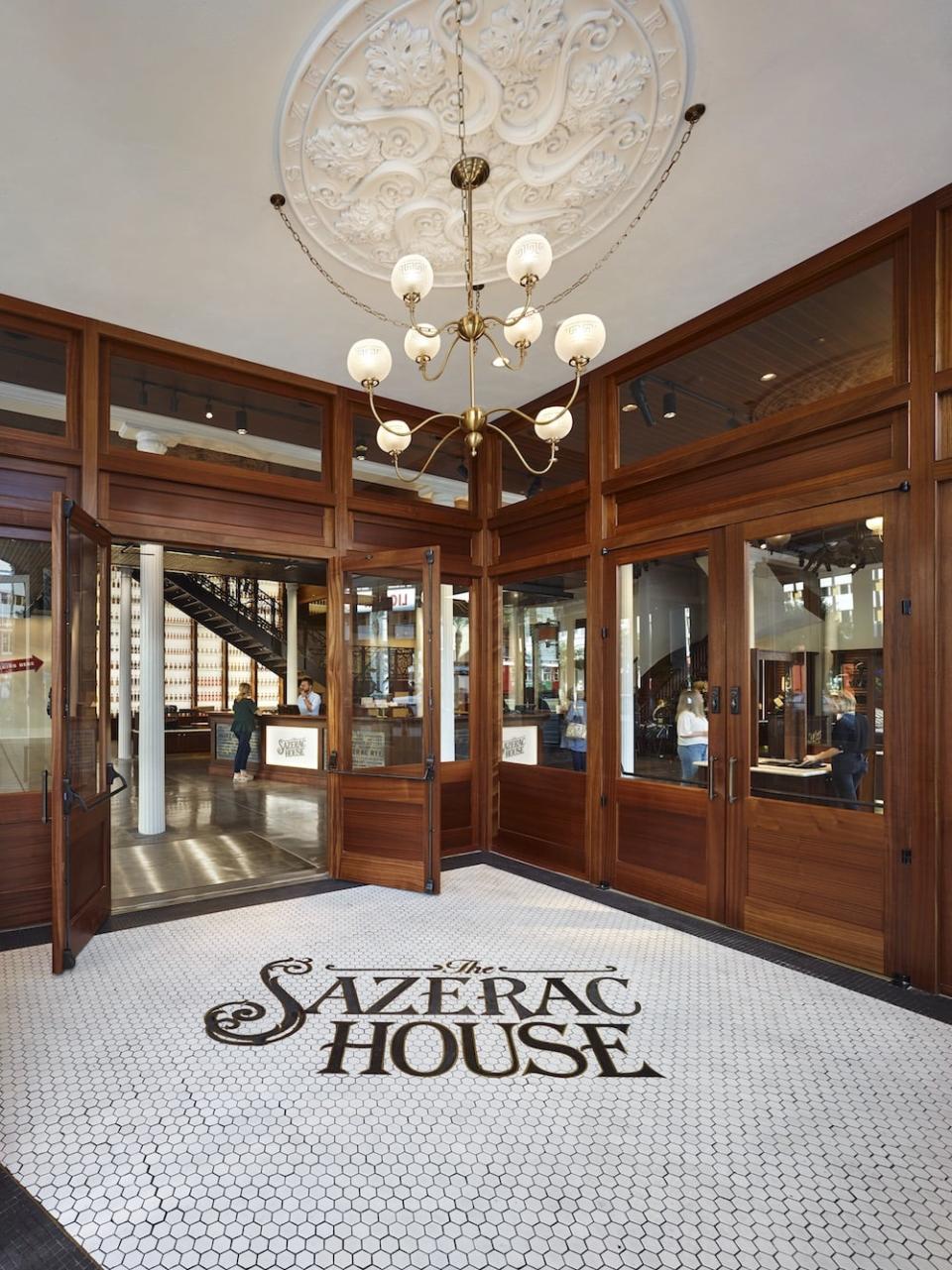New Orleans’ Latest Attraction: A Museum of Liquor

This week, after a $50 million renovation, an empty and majestic five-story 1860-era New Orleans building was reborn as the headquarters of the Sazerac Company, maker of notable whiskies and other fine spirits.
Three stories of it have been turned into an immersive state-of-the-art museum focusing on spirits history, complete with a working distillery. It’s located just across Canal Street from the French Quarter and a five-minute walk from Bourbon Street, a boundless source of tourists pre-approved for bibulous entertainment. Tours are free, and the company is anticipating 100,000 visitors a year.
Coinciding with the museum’s opening, the Sazerac Co. will officially release its first Cognac in decades—Sazerac de Forge & Fils “Finest Original” Cognac. No real surprise: the company bought a venerable Cognac distillery in France a few years ago. Billed as an “expressive, generous and honest Cognac,” it will be available only at the Sazerac House through early 2020, and is priced at $140 a bottle.
So one wonders, is the company that’s most closely associated with the Buffalo Trace Distillery in Frankfort, Kentucky—where beloved bourbons like Eagle Rare, Blanton’s, E.H. Taylor, W.L. Weller, and Pappy Van Winkle are made—leaving the plains where it has long roamed to set off on new ventures?
Well, yes and no.
By building its high profile “homeplace,” Sazerac is jumping on a bandwagon led by other spirits producers. Homeplaces are brands made manifest, a geographic anchor, a Disneyland for drinkers—essentially a visitor center turned up to “11.” Downtown Louisville is now abloom with such places—Angel’s Envy, Old Forester, Evan Williams, Michter’s, Peerless and Rabbit Hole all have opened immersive tours, some attached to active distilleries.

Beyond Louisville, distillery “experiences” throughout Kentucky have significantly upgraded lately—including Four Roses, Woodford Reserve and Maker’s Mark. The new Bulleit Distillery in Shelbyville, promises the “experience [of] the sights, sounds, smells, and tastes of the Bulleit portfolio through our interactive tasting experience.” And Bardstown Bourbon just opened its new “Visitors Center Experience” last month.
Sazerac, however, has chosen not to follow suit in Kentucky. This seems odd at first, since its historic Buffalo Trace property, with its recently excavated remnants of an 1873 distillery, would make a spectacular homeplace and already attracts hordes of visitors every year.
But by investing deeply in New Orleans—and releasing its new Cognac—Sazerac Co. is in effect returning to its deep roots. This is not just the opening of a homeplace. It’s a full-on homecoming.
Sazerac de Forge et Fils dates to 1782, when Bernard Sazerac purchased an estate outside Angoulême, near Cognac, France. His business empire would grow to include a paper mill, steel forge, along with a vineyard and brandy distillery. In the 19th century, his descendants expanded exports to the United States—and by the middle of the century New Orleans was emerging as a booming market.

Taking the name of the importer, the Sazerac Coffee House was opened by Aaron Bird in the Merchant’s Exchange in 1850, deep in the French Quarter. The company grew and soon moved to acquire a number of liquor brands, including Peychaud’s Bitters. Imports of brandy fell sharply following the phylloxera blight, which wiped out most French vines in the late 19th century. But the company soldiered on, selling rye whiskey and, in the 1890s, a popular bottled Sazerac cocktail.
The coffee house outgrew its roots and morphed into the Sazerac Company, which was chartered in New Orleans and has been headquartered there ever since. (The Goldring family, which owns the company, has long ties to the city and is an inescapable presence there.) In 1992, the company bought the sprawling former Ancient Age distillery in Frankfort and renamed it Buffalo Trace. Now with more business in whiskey country, the main offices, including that of CEO Mark Brown, set up shop in Kentucky beginning in 2009.
In recent years, there’s been a quiet but discernible shift back toward New Orleans, at least in its product line, as the Sazerac Co. built a specialty spirits portfolio that could double as an exhibit of New Orleans drinking history.
In 2010, they released Legendre Herbsaint, based on the original 1930s formula (Sazerac has owned New Orleans-created Herbsaint since 1949.) In 2014, they rolled out Peychaud’s Barrel-Aged Bitters. In 2016, they introduced Peychaud’s Aperitivo, Legendre Ojen (a Spanish anisette liqueur of obsessive concern to New Orleanians); they also bought Southern Comfort, a brand that had been founded in New Orleans in 1874.
Then two other events occurred in 2016: Sazerac announced that it would open a headquarter and museum in downtown New Orleans—just a few blocks from where the original Sazerac Coffee House once stood. And, like fish making the final return upstream to spawn, they acquired the historic Cognac distillery in France, not far from where Bernard Sazerac established the business nearly two and a half centuries ago.
When Sazerac purchased Breuil de Segonzac in the heart of Cognac’s Grande Champagne region, they got 220 acres of organic vineyards, an ancient farmhouse, and four Charente pot stills, including two antiques. What they didn’t get were warehouses filled with priceless aging stock—the distillery has been selling their distillate to the larger Cognac houses for blending for years.
“We inherited about ten barrels,” says Clive Carpenter, the distillery’s general manager. Aiming to remain true to company history, Carpenter and his crew scouted for aging barrels at other distilleries in the region, targeting Cognac made from folle blanche and colombard grapes, two varietals common when Sazerac was first exported two centuries ago. “We’re tying to recreate Cognac of the first three-quarters of the 19th century,” says Carpenter.
The brandy released this week is that blend of aged Cognacs sourced from other producers. “The Cognacs we’re making now won’t see the light of day for 10 years, or probably more,” Carpenter says. Not only does aging their own Cognac take time, but they’ve replanted most of the grapes on the property with colombard and folle blanche, which will extend an already a long calendar.
With new grapes and old stills, Carpenter is looking forward to seeing what he can turn out in Sazerac’s new French outpost. “We’re not intending to make Cognac like everybody else,” he says. “There’s no point in it. We’re going to try to make things that taste different—using different ways to distill, and different kinds of warehouses. We want to show that you can make Cognac in many different ways. It doesn’t always have to be the same homogenized, industrialized product that it appears to have become standard these days.”
Sound familiar? If so, it’s because that’s the same philosophy Sazerac has taken at its Buffalo Trace distillery, where it has long engaged in experiments with American whiskey mash bills, barrels, and aging conditions. And it’s similar to what the company has underway at its Old Montreal Distillery in Canada, where the company is also taking an innovative approach to distilling and blending Canadian whiskey.
The Sazerac Co. has a prickly reputation of not being much of a team player in the whiskey industry—it’s not a member of the Kentucky Distillers’ Association (so Buffalo Trace is not on the Kentucky Bourbon Trail), nor is it a dues-paying member of the Distilled Spirits Council of the United States, which virtually every other major brand is.
So a new museum and homeplace far from Kentucky, and a Cognac roll-out during a whiskey boom? That’s just the sound of The Sazerac Co, marching to the beat of a drum few others hear.
Get our top stories in your inbox every day. Sign up now!
Daily Beast Membership: Beast Inside goes deeper on the stories that matter to you. Learn more.

